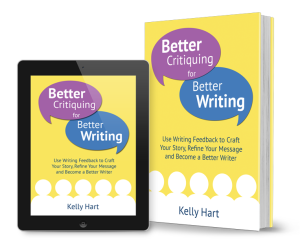
As a writer, you need to avoid having different points of view dancing all over the place with no consistency. It jolts the reader out of your story and is a sign of an amateur writer. It could also prevent your book from becoming a best-seller.
It’s important to know how to use point of view in writing, as this will help you make an educated decision on which point of view to use in your manuscript.
I’m going to cover each point of view and what that point of view is most commonly used in. This doesn’t mean you can’t break the point of view conventions, but if you do make sure you know why you want to do so and that the point of view you choose suits your book or story.
If you find the point of view isn’t working as well as you thought, don’t be afraid to rewrite from a different viewpoint.
This could be the element that transforms your book into a compelling experience the reader can’t put down.
First person – I, me, my
First person point of view is a popular choice for new writers because it limits the possibility of changing to another viewpoint by accident. It also has the reputation of being the ‘easy’ choice. I personally don’t think this is true. Each point of view has its own pros and cons.
In first person viewpoint the reader becomes the point of view character; this can be either the main character or a secondary character that witnesses everything that happens to the main character.
A good example of a secondary character having the first person viewpoint is Doctor Watson from Sherlock Holmes.
The problem with first person point of view is that you have to be diligent in making sure that you don’t tell your reader anything that your point of view character can’t see, hear, smell or otherwise know.
As soon as you go outside these parameters you will break your reader’s belief that they are inside that character.
Once you have chosen a first person viewpoint character, you really shouldn’t use first person point of view for another character as this can be extremely confusing.
The only book that I have read with two first person viewpoint characters was Allegiant, the third book in the Divergent series.
*SPOILER ALERT*
If you haven’t read the Divergent series all the way through, skip down to Second person – you.
I didn’t enjoy the experience of jumping from the main viewpoint character Tris (that I had followed for almost three books) to that of another character, but as Tris died the author needed another viewpoint character.
The author chose to use first person point of view again, this time from Four’s perspective. I personally found this confusing for the first couple of pages as Tris and Four were very similar in personality; it made me go back and re-read to see if Tris was dead or dreaming. If the author had tried this point view switch anywhere in the first two books, I would have stopped reading.
If you really want to have another character’s perspective along with your first person character’s perspective, I suggest using third person point of view for the other perspective. This way your reader will know that they’re following another character.
The first person point of view is used mostly in detective novels, young adult novels and memoirs.
Second person – you
Second person point of view is where you as the author or narrator are directly addressing the reader.
Example: You could smell the fresh mint in the kitchen.
This is known as breaking the fourth wall and what it means is that you address the reader or viewer and let them know that you know they’re witnessing this event. Examples of this are Birdman and House of Cards.
Yes, I know these aren’t books, but trust me when you see this in action you will know what I mean.
The problem with this point of view is that the reader never becomes directly involved with the characters. They always know that they’re the audience and not really part of the story itself. This distance means the emotional connection between the characters and reader is absent.
For this reason the second person point of view is rarely used in fiction novels and if it is used, normally it’s only for a couple of paragraphs to provide distance from the scene being read. The other problem is that it’s very hard to remain in this point of view without slipping into first or third person as these come more naturally to writers.
Second person point of view is more commonly used for self-help books, travel writing, or ‘choose your own adventure’ books.
Third person limited – she, he, they
Third person limited point of view is very close to first person but instead of using the ‘I’ pronoun you use ‘she’, ‘he’ or ‘they’. You still experience the actions, thoughts and feelings of the viewpoint character.
Although you can only experience the point of view of one character at any time, you can switch between different characters as long as you use a scene, section or chapter break and signal the change to your reader by letting them know which character’s perspective they are viewing the story from.
Third person limited point of view is the most commonly used viewpoint in fiction.
Omniscient – she, he, they
Omniscient point of view is a god-like perspective of the action and characters, where you can dip into the mind of any character, see and feel what they are seeing or feeling at that moment.
The narrator has their own voice and is telling the story; they know all the other characters and what these characters are thinking and feeling, but the narrator will only tell the reader what they need to know.
This is an extremely hard point of view to write because it can seem like head-hopping when not done correctly. You need to signify to your reader which character’s head you are about to jump into without being too obvious. If you are too obvious the story will feel jerky but if you are too subtle your reader may end up confused.
Omniscient point of view is used mostly in fiction.
Changing point of view
When changing point of view characters for first person, second person and third person limited, make sure you change after a new chapter, section or scene break and remember to clue your reader in to whose point of view they’re experiencing.
For omniscient point of view you can change anywhere you like as long as you let your reader know whose mind they are dipping into. It is best to change in a new paragraph or with a new sentence as changing mid-sentence is very abrupt and may annoy your reader.
My piece of advice: never change mid-sentence unless you can explain to your editor why you needed to do so!
Yep, Goldilocks had it easy with finding the right porridge, if only it was as easy to find the right point of view.






Connect With Kelly